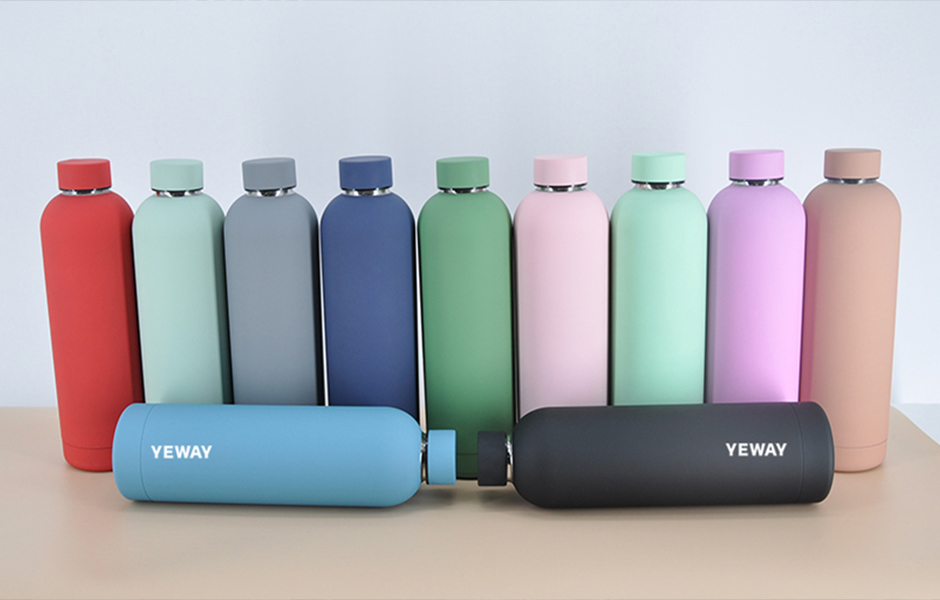
Have you ever been amazed by the magical performance of a high-quality vacuum insulated stainless steel water bottle? On a hot summer day, it lets you enjoy chilled water in the afternoon; during the cold winter, it allows you to savor warm coffee outdoors. This isn’t magic—it’s sophisticated scientific engineering.
Today, we’ll take an in-depth look at the insulation technology of stainless steel water bottles, understand the difference between vacuum insulation and double-wall construction, and help you make the smartest choice.
To understand insulation technology, we first need to know how heat is lost. There are three main ways:
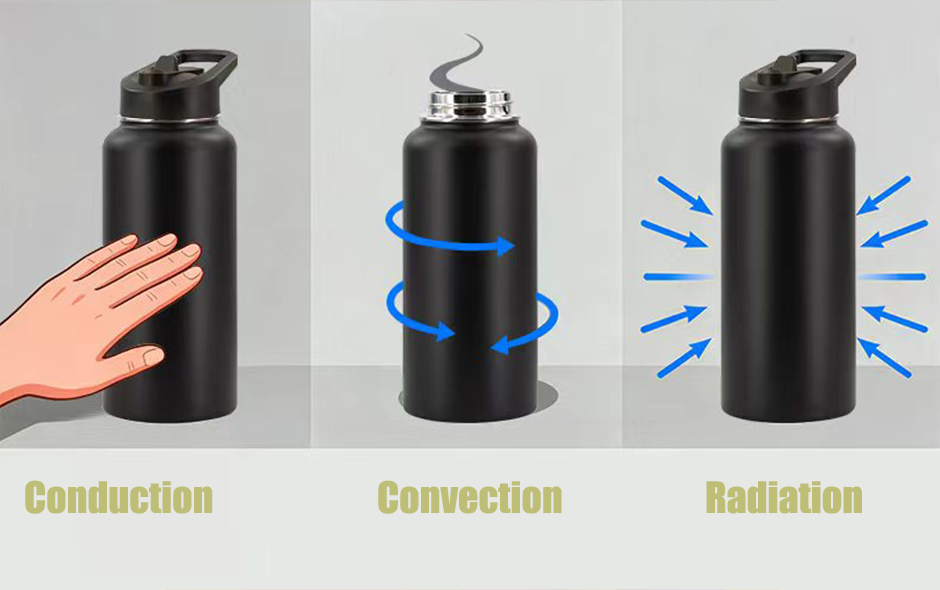
- Conduction: Heat transfers from a higher-temperature object to a lower-temperature one through direct contact. It’s like touching a glass filled with hot water—you feel the heat immediately.
- Convection: Heat transfers through the flow of liquids or gases (like air). For example, blowing on the surface of hot water cools it faster.
- Radiation: Heat radiates directly into the surroundings in the form of invisible infrared waves, requiring no medium. The best example is the heat from the sun traveling through space to reach Earth.
The mission of an effective insulated water bottle is to block these three forms of heat transfer as much as possible.
Vacuum Insulation Technology
This is the gold standard technology used in top-tier insulated bottles.
Advantages: Extreme thermal performance, lightweight (compared to other materials with similar insulation effects).
Disadvantages: Higher manufacturing cost, relatively expensive, and requires avoiding severe impacts to prevent damage to the vacuum layer.
How It Works:
Between the inner and outer walls of the bottle, air is removed through a special process to create a near-vacuum layer.
The vacuum environment prevents conduction and convection through air, thereby efficiently isolating most heat exchange.
Additionally, many high-end brands coat the inner wall of the vacuum layer with copper or silver, which acts like a mirror to effectively reflect thermal radiation, providing triple protection.
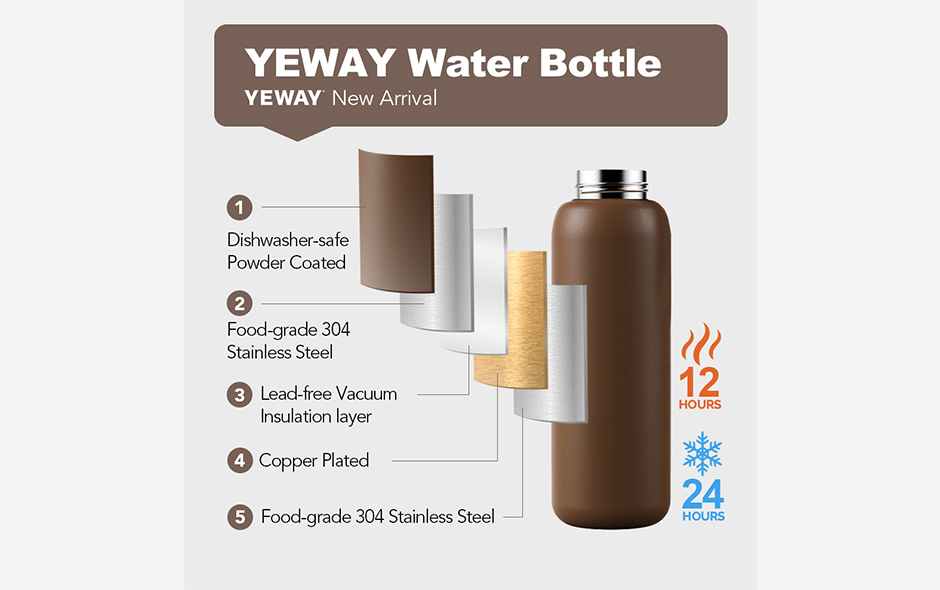
YEWAY Vacuum Insulation water bottle the inner wall of the vacuum layer with copper or silver
This is the key to achieving the ultra-long performance of stainless steel water bottles for hot and cold drinks. High-quality products typically keep heat for 12-24 hours and cold for 24-36 hours.
This is also why brands like Hydro Flask and YETI are renowned as best rated insulated stainless steel water bottles.
Double-Wall Technology (Non-Vacuum)
This is a common technology used in many water bottles on the market.
Advantages: Lower cost, lighter weight.
Disadvantages: Insulation performance cannot compare to vacuum technology.
How It Works:
It also has two layers—inner and outer walls—but the middle layer is filled with air, not vacuum.
Still air is itself a good insulator and can slow down conduction and convection to some extent, but its effect is far inferior to vacuum.
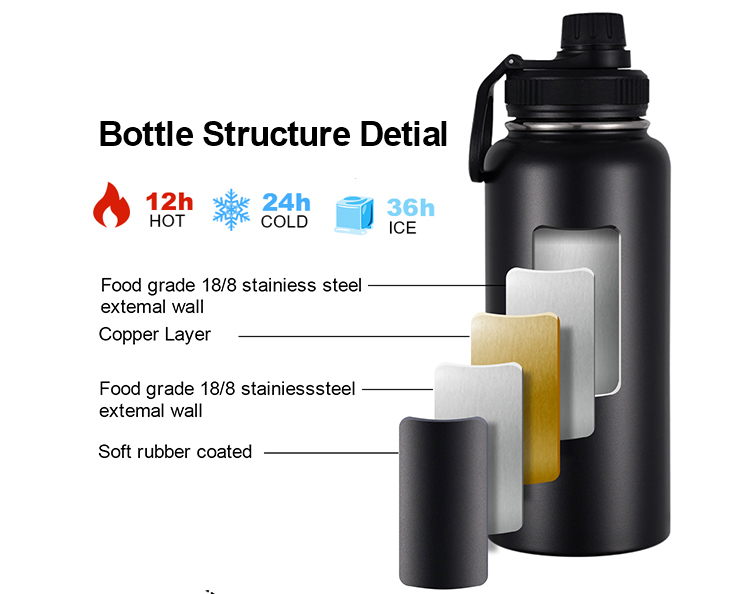
Double-Wall(Non-Vacuum) Stainless Steel Water Bottles
It provides basic insulation, possibly keeping heat for 1-4 hours and cold for 4-8 hours. This is sufficient to prevent “sweating” (condensation) on the bottle walls and offer short-term thermal retention.
It is commonly found in styles that prioritize lightweight and cost-effectiveness.
Buying Guide: 4 Ways to Tell Vacuum from Non-Vacuum
- Check the Product Description: Look for the term “Vacuum Insulated“. If it only says “Double Wall” or “Insulated”, it likely has a non-vacuum air layer.
- Listen to the Sound: Gently shake the empty bottle near your ear. A true vacuum bottle will sound muffled, short and low-pitched, due to the vacuum layer. A non-vacuum double-wall bottle will sound hollow, with a kind of echo.
- Feel the Weight: Vacuum bottles might be slightly heavier than non-vacuum ones of the same size due to more complex manufacturing (though this isn’t an absolute rule).
- Ask Customer Service: The most direct way is to ask the seller: “Is the middle layer of this bottle vacuum-insulated?”
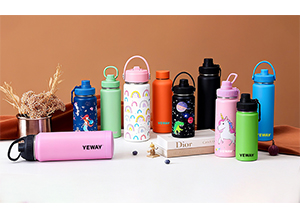
Tip: Once you’ve decided on the insulation technology, it’s time to consider capacity. What size bottle best suits your needs? Our “Capacity Guide: From 12oz to 1 Gallon” offers detailed reference.
Conclusion: Choose the Right Technology for Your Needs
Which technology you choose depends entirely on your usage scenarios and needs.
- If you’re an outdoor enthusiast, have a long commute, or pursue a lifestyle where you can enjoy ice water or hot tea all day, investing in a vacuum insulated stainless steel water bottle is definitely worth it.
- If you only need it for short-term daily use and prefer a lightweight, cost-effective option, a double-wall stainless steel water bottle can serve you well.
No matter which technology you need, we can provide personalized custom solutions. From selecting the most advanced vacuum insulated bottle bodies to engraving your company’s exclusive logo, YEWAY is here to assist you in creating unique branded gifts. Contact us now for a custom solution and quote!
Q: Why does my vacuum bottle seem to no longer keep temperature?
A: It’s likely because the vacuum layer has been physically damaged, such as from a severe impact or drop. Once the vacuum is compromised and air enters, its insulating properties are lost. So, be sure to take good care of your bottle.
Q: Can I put my vacuum bottle in the freezer?
A: Absolutely not! Liquids expand when freezing, and the sealed vacuum environment prevents this expansion, which could cause the bottle to crack from the inside, permanently damaging it.
Q: How can I simply test my bottle’s insulation performance at home?
A: Fill it with hot water (not too full), screw on the lid tightly, let it sit for 15-20 minutes, then touch the outside and bottom of the bottle. If you feel no warmth at all, the vacuum insulation is excellent. If it’s noticeably hot, the insulation is poor or damaged.
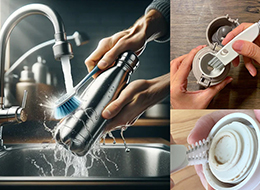
Tip: Proper use and maintenance can greatly extend your bottle’s life. Want to know how to thoroughly clean different lids or remove stubborn odors? Save our “Cleaning and Maintenance Guide for Stainless Steel Water Bottles“.

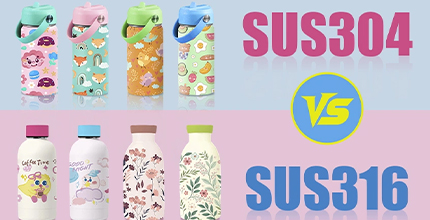

![2025 Global Kids Water Bottle Market TrendsA B2B Manufacturer's Strategic Guide | [YEWAY]](https://yewaydrinkware.com/wp-content/uploads/2025/11/2025-Global-Kids-Water-Bottle-Market-Trends.jpg)
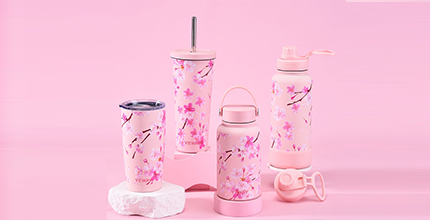
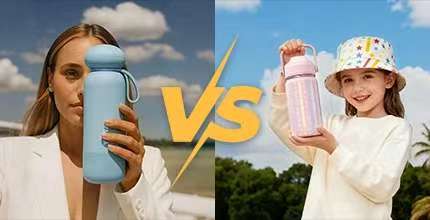
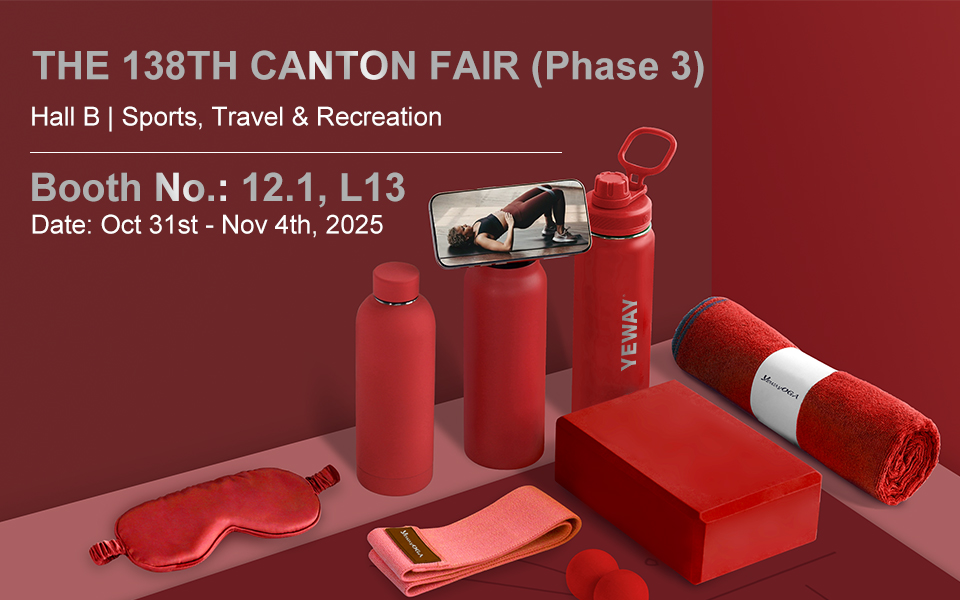
Leave a Reply